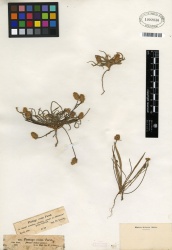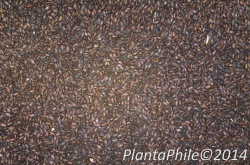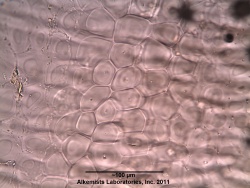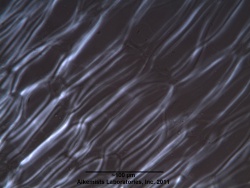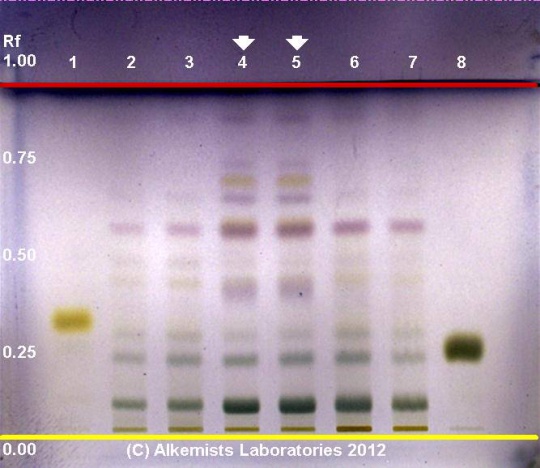Plantago ovata (seed husk)
(add PlantaPhile references) |
|||
| (8 intermediate revisions by 3 users not shown) | |||
| Line 1: | Line 1: | ||
| − | + | {{DISPLAYTITLE:''Plantago ovata'' (seed husk) }} {{askbox|herb=''Plantago ovata''}} | |
| − | '' | + | =Nomenclature= |
| − | + | {{nomenclature | binomial=Plantago ovata | |
| + | |authority=Forssk. | ||
| + | |family=Plantaginaceae | ||
| + | |scn=Indian plantain | ||
| + | |syn=''Plantago ispaghula'' Roxb. ex Fleming | ||
| + | |ayurvedic= | ||
| + | |pinyin= | ||
| + | |aka=blonde psyllium (seed); Indian psyllium; ispaghula (seed) | ||
| + | |notes=The standard common name of the seed of P. ovata and other species of Plantago is psyllium. }} | ||
| − | + | =Botanical Voucher Specimen= | |
| − | + | {{Media |cat=Voucher | |
| − | + | | source=MOBOT, Tropicos.org | |
| + | | mainimage=Plantago_ovata_Tropicos_100186592_(S).jpg | ||
| + | | companyimage=TropicosLogo.gif | ||
| + | | companyURL=http://www.tropicos.org/Image/100186592 | ||
| + | | reference=Tropicos.org. Missouri Botanical Garden. 26 Mar 2014 <http://www.tropicos.org/Image/100186592> | ||
| − | + | | }} | |
| − | + | =Organoleptic Characteristics= | |
| − | = | + | {| border=1 |
| − | = | + | | |
| + | {{Organolepsy | source=United States Dispensatory (1918) | ||
| + | | description=No odor or taste.}} | ||
| + | |} | ||
| − | {{Microscopy | source=Elan M. Sudberg, Alkemist Laboratories | + | =Macroscopic Characteristics= |
| + | {| border=1 | ||
| + | | | ||
| + | {{Macroscopy | source=United States Dispensatory (1918) | ||
| + | | description=''Plantago ovata'' ... is a herbaceous plant ... either erect or decumbent and varies in height from 2.5 cm. to 1 dm. The leaves are ovate and either glabrous or shaggy hairy. The flower spikes are either cylindrical or reduced to a globular head. | ||
| + | |||
| + | Seeds boat-shaped, somewhat acute at one end, from two to three millimetres long and from one to one and a half millimetres wide; pale greyish-brown, with a darker elongated spot on the convex side; on the concave side the hilum covered with the remains of a thin white membrane. In water the testa swells, producing a viscous mucilage.}} | ||
| + | {{ Media | cat=Macroscopy | ||
| + | | source=PlantaPhile | ||
| + | | mainimage=PlantaPhile - 2605.jpg | ||
| + | | companyimage=PlantaPhile logo.jpg | ||
| + | | companyURL=http://plantaphile.com/ | ||
| + | | }} | ||
| + | |} | ||
| + | =Microscopic Characteristics= | ||
| + | |||
| + | {{Media2 |cat=Microscopy | source=Elan M. Sudberg, Alkemist Laboratories | ||
| companyimage= AP-LOGO-Laboratories Crop - Copy.jpg | | companyimage= AP-LOGO-Laboratories Crop - Copy.jpg | ||
| − | | companyURL=http://www. | + | | companyURL=http://www.alkemist.com |
| mainimage=Psyllium Husk.jpg | | mainimage=Psyllium Husk.jpg | ||
| caption1=Epidermal cells of the husks in surface view containing mucilage observed at 400x with Acidified Chloral Hydrate Glycerol Solution. | | caption1=Epidermal cells of the husks in surface view containing mucilage observed at 400x with Acidified Chloral Hydrate Glycerol Solution. | ||
| − | | | + | | source2=Elan M. Sudberg, Alkemist Laboratories |
| + | | companyimage2= AP-LOGO-Laboratories Crop - Copy.jpg | ||
| + | | companyURL2=http://www.alkemist.com | ||
| image2=Psyllium Husk-1.jpg | | image2=Psyllium Husk-1.jpg | ||
| caption2=Parenchyma cells seen under polarized light observed at 400x with Acidified Chloral Hydrate Glycerol Solution. | | caption2=Parenchyma cells seen under polarized light observed at 400x with Acidified Chloral Hydrate Glycerol Solution. | ||
| − | + | | characteristics=cellular structures identified in this botanical specimen are the epidermal cells of the husks in surface view containing mucilage and the parenchyma cells seen under polarized light when observed at 400x with Acidified Chloral Hydrate Glycerol Solution. | |
| reference=British Pharmacopoeia, 2011 | | reference=British Pharmacopoeia, 2011 | ||
| }} | | }} | ||
| − | = | + | =High Performance Thin Layer Chromatographic Identification= |
{{HPTLC | source=Elan M. Sudberg, Alkemist Laboratories | {{HPTLC | source=Elan M. Sudberg, Alkemist Laboratories | ||
| description=Psyllium (husk) (''Plantago ovata'') | | description=Psyllium (husk) (''Plantago ovata'') | ||
| Line 35: | Line 68: | ||
| companyURL=http://www.alkemist.com | | companyURL=http://www.alkemist.com | ||
| mainimage=Plantago_ovata_husks_-_Alkemists_Laboratories.jpg | | mainimage=Plantago_ovata_husks_-_Alkemists_Laboratories.jpg | ||
| − | | caption1= | + | | caption1= ''Plantago ovata'' HPTLC ID - Vanillin/H2SO4 Reagent-> 110° C 5 min -> visible light |
| stationaryphase=Silica gel 60, F254, 10 x 10 cm HPTLC plates | | stationaryphase=Silica gel 60, F254, 10 x 10 cm HPTLC plates | ||
| mobilephase=ethyl acetate: glacial acetic acid: methanol: water [6/1.5/1.5/1] | | mobilephase=ethyl acetate: glacial acetic acid: methanol: water [6/1.5/1.5/1] | ||
| Line 56: | Line 89: | ||
| }} | | }} | ||
| − | = | + | =Supplementary Information= |
| + | =Sources= | ||
| + | <references /> | ||
Latest revision as of 15:38, 5 May 2015
Contents |
Nomenclature
Plantago ovata Forssk. Plantaginaceae
Syn. Plantago ispaghula Roxb. ex Fleming
Standardized common name (English): Indian plantain
Botanical Voucher Specimen
|
|
Organoleptic Characteristics
|
Macroscopic Characteristics
|
Microscopic Characteristics
 |
 |
|
|
|
High Performance Thin Layer Chromatographic Identification
|
Psyllium (husk) (Plantago ovata) Lane Assignments Lanes, from left to right (Track, Volume, Sample):
Stationary Phase Silica gel 60, F254, 10 x 10 cm HPTLC plates Mobile Phase ethyl acetate: glacial acetic acid: methanol: water [6/1.5/1.5/1] Sample Preparation Method 0.3g+3mL 70% grain EtOH sonicate/heat @~50° C ~ 1/2 hr Detection Method Vanillin/H2SO4 Reagent-> 110° C 5 min -> visible light Reference see Method Developed by Alkemists Laboratories
|
Supplementary Information
Sources
- ↑ MOBOT, Tropicos.org http://www.tropicos.org/Image/100186592
- ↑ United States Dispensatory (1918)
- ↑ United States Dispensatory (1918)
- ↑ PlantaPhile http://plantaphile.com/
- ↑ Elan M. Sudberg, Alkemist Laboratories http://www.alkemist.com
- ↑ Elan M. Sudberg, Alkemist Laboratories http://www.alkemist.com
- ↑ Elan M. Sudberg, Alkemist Laboratories http://www.alkemist.com
